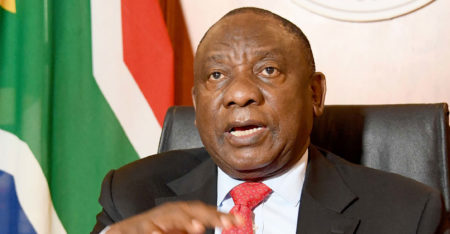
While there is and likely will always be fundamental disputes amongst economists and policymakers about the best models and policies for economic growth, there is now wide consensus on one thing: increased Internet and broadband access causes increased rates of economic growth.
This is a far more confident prediction than merely stating that growth in the economy is strongly associated with increased Internet and broadband access. Already in 2009, the World Bank’s IC4D division published its calculations and demonstrated show that the multiplier effect was even stronger in developing than developed countries: with increased penetration of dial-up Internet in increments of 10%, GDP in developing countries grew by 1,1%, while the same increment in broadband penetration caused increased growth of just under 1,4%.
The only question among policy makers is how best to promote this increased broadband penetration and push through the virtuous multiplier effect. Sadly, in South Africa not much can be said for the department of communications, which has been left in a moribund state with five different ministers in as many years. The regulator, Icasa, is faring little better. Countries that were once well behind us in broadband have surged past us in several critical measures of connectivity.
Possibly adopting the wisdom of Georges Clemenceau, the French prime minister in World War I, who said that war is a far too important matter to be left to the generals, planning minister Trevor Manuel had the issue of broadband and ICT generally addressed in the national development plan.
The plan, noting several failings, states that the last ICT policy review took place in 1996. It then sets out the skeleton of what a new telecommunications policy should be. To be fair, the most recent communications minister, Yunis Carrim, seems to understand the scale of the problems and has set himself firm delivery targets on a detailed list of projects. So far, we have seen the publication of the draft broadband policy.
There is a lot to like in this document: it sets definite goals, it covers most bases and contains a sound analysis of our current position. That said, it is still quite vague on the specifics.
It looks to have passed an important test: telecoms policy can be captured by incumbent operators who tend to want to locate themselves at the centre of things for their own interests. This document does not do that. Further, there are some worthwhile themes: identifying the need to remove administrative bottlenecks and lower hurdles. This effort is to be directed via the presidential infrastructure co-ordinating committee to “co-ordinate and integrate broadband roll-out across the different tiers of government”.
This is all very encouraging as it recognises that broadband policy needs to work locally. As we are seeing, the local municipalities’ policies on way leaves, ducts and open-access rules for fibre-laying are more important than just about any other decision in the provision of broadband services.
There are also significant references to the need for public-private partnerships. This is the particularly interesting part. While the early cellphone business model of having a few large companies operating exclusive licensed spectrum using the GSM standard worked — arguably much better for those companies than their subscribers — the provision of broadband is different. Decent broadband is much less profitable and the basic business model of telecoms operators needs to change if the targets set out in the draft policy document are to be met.
So, while debates around call termination rates might make the news, there is no such thing as termination rates in an Internet-only world. All we have are mutterings from the mobile operators that if they can’t be hugely profitable, they won’t be able to fund their broadband expansion plans. Further, open-access rules and laws against anticompetitive behaviour limit cross-subsidisation efforts.
Elsewhere, mobile network operators have had to adapt. Telefónica and Vodafone now share network infrastructure, including backhaul links and many others, following the example of Bharti Airtel, have entirely outsourced the running of their networks to equipment-makers. This is now moving to sharing the “radio access network”, or the part of the network connecting subscribers to the network. Elsewhere (here and here) we have seen that exclusive licensing of frequency might not always be necessary. Technology is overcoming the interference problem and regulators should simply set up “rules of the road” and enforce the rules. All this strongly reminds one that telecoms networks are becoming akin to mere utilities much like water or electricity. This has big implications for how one regulates telecoms. One way is to follow the TCP/IP four layer model and regulate each layer on its own terms.
In the absence of a clear investable business model for the provision of broadband, a type of utility, particularly in underserviced areas, might require the direct involvement of government, particularly provincial but more especially local government. An example of this is the Western Cape’s broadband initiative, a detailed project of the provincial government which has recently called for proposals to deploy cost-effective Wi-Fi services in several underserviced localities.
There are, however, several reasons to be cautious. And avoiding the further waste of public funds in extending broadband access is must be a prime concern. In other sectors in South Africa we have seen public-private partnerships producing very poor results, but when they are properly designed we have seen successes as well.
Fortunately, the silver lining to the dark cloud of the neglect of developing policy in telecoms is that we can learn from the experience of other countries. It would be tragic if we did not learn from them. While many decisions on roll-out and bandwidth targets have often been made on the basis of insufficient and poor information, we don’t have to make the same mistakes.
An obvious mistake is to have bandwidth targets that are unaffordable. To avoid nasty cost traps, a consistent and coherent broadband policy should be in place. This should cover a thorough market and demand assessment, which has to determine future broadband demand for national and local levels as well as for different usage patterns (high-usage vs low-usage segments) complemented by identifying the value drivers for different technologies. This identifies the gap between market demand and strategic supply.
Secondly, operational models have to be developed which usually establish a clear governance and distribution of responsibilities for the private and public sector. This includes scenarios for partnering, financing, and managing with regard to different institutional settings and the assessment of different implementation models.
Thirdly, the assessment of technology options and roadmaps should be done based on demand assessment, appropriate technological solutions for broadband accessed should be identified — usually for local geographies and population densities, together with the investment requirements for different technologies for different sub-regional roll-out areas.
Finally, financial viability of the different options has to be tested, combining results from market and demand sizing with cost assessments for technology deployment in different localities. This process can show which areas can be served profitably by different broadband service providers and areas that can be served sustainably by one service provider only.
We need to size and cost the access gap to balance the broadband goals (high bandwidth for large parts of the population) with its affordability (viability of massive investment requirements).
- Dirk de Vos is a consultant in renewable energy and telecommunications
- Read more columns by De Vos




